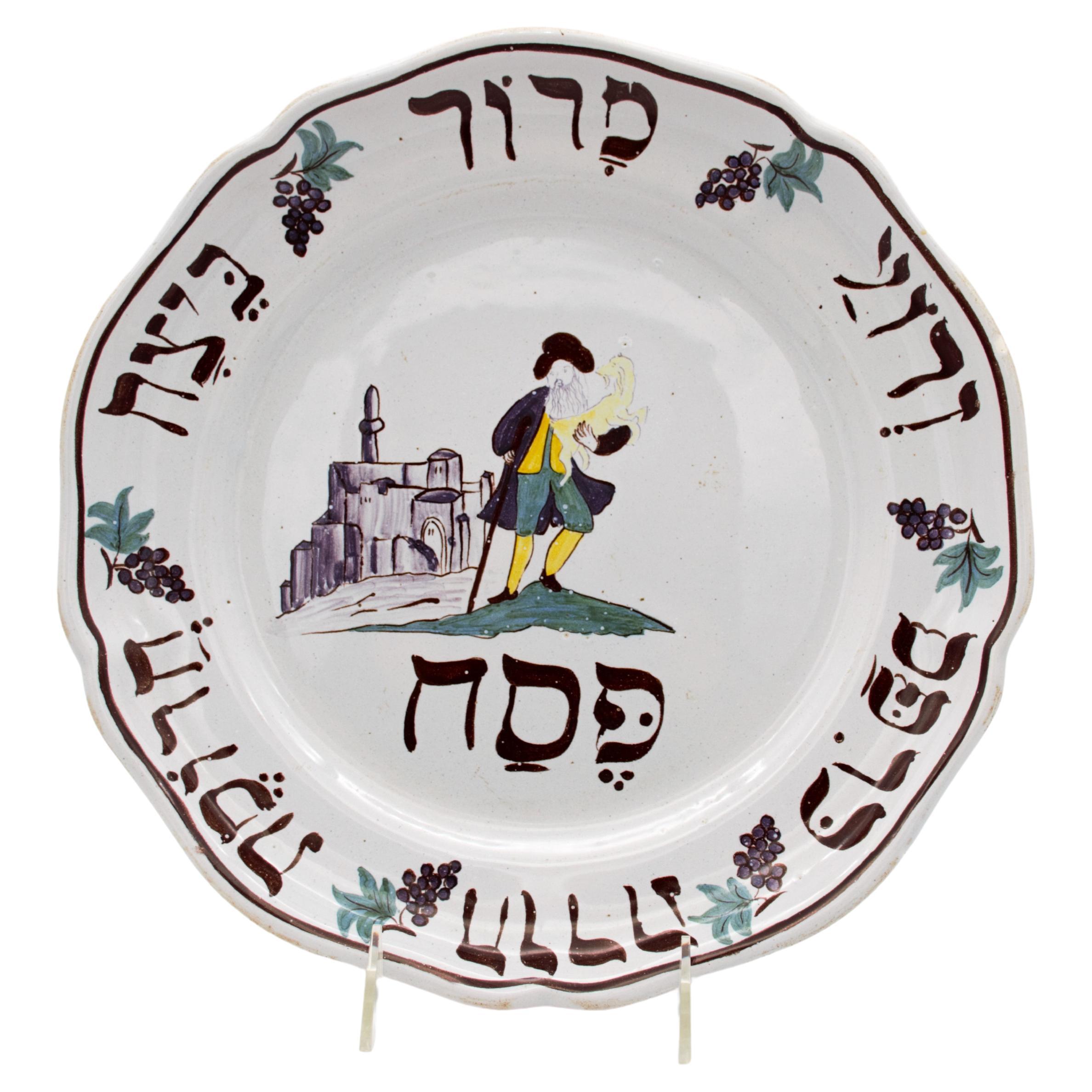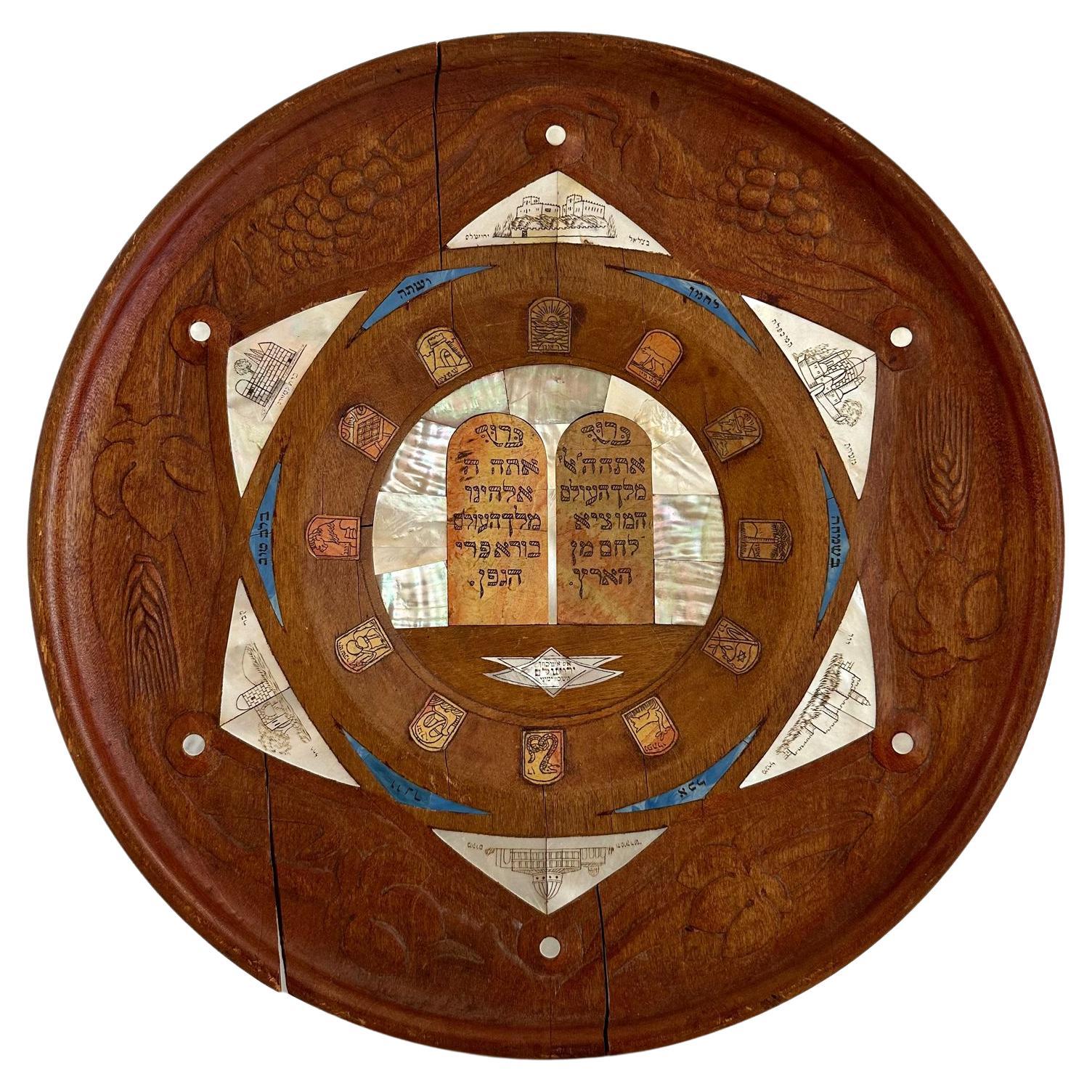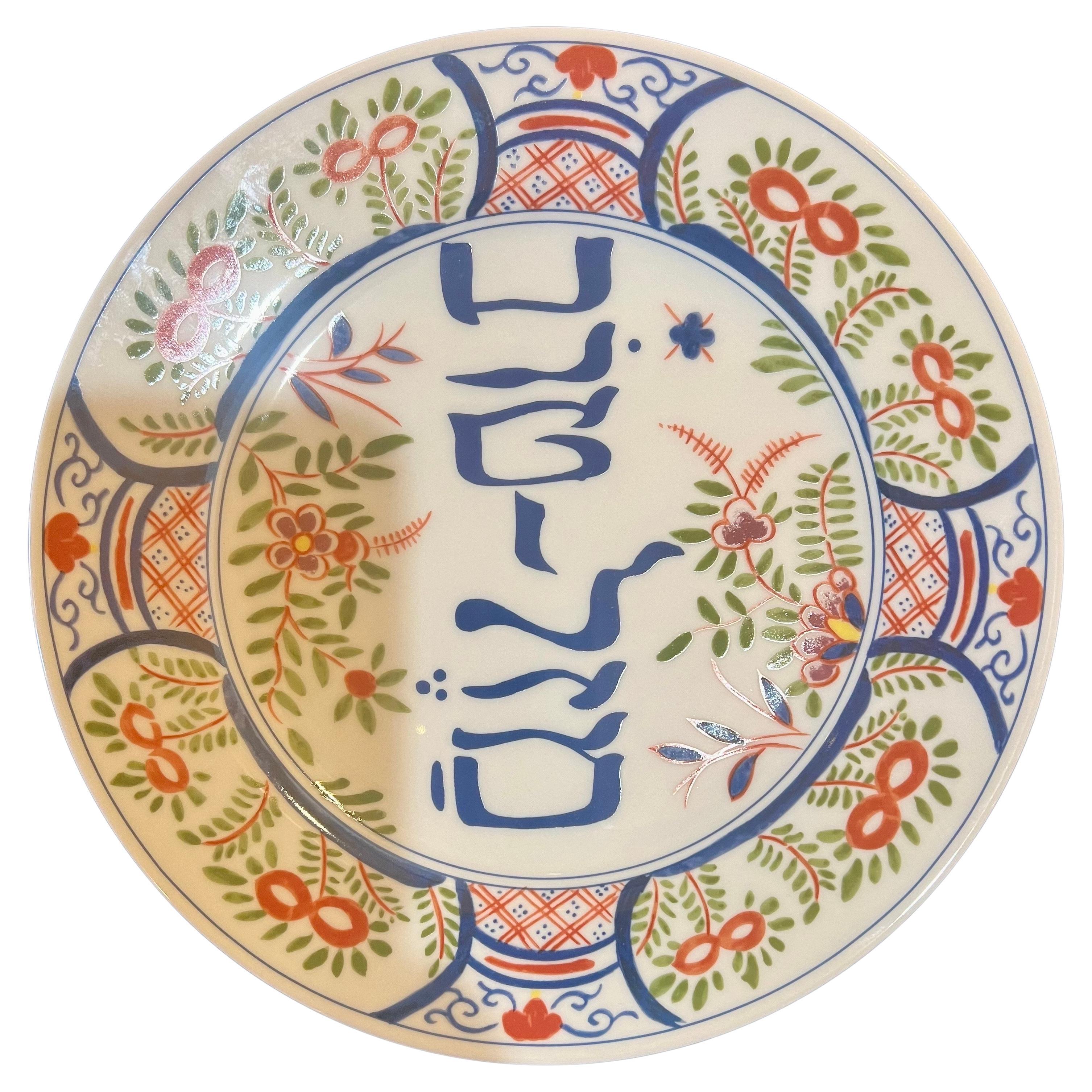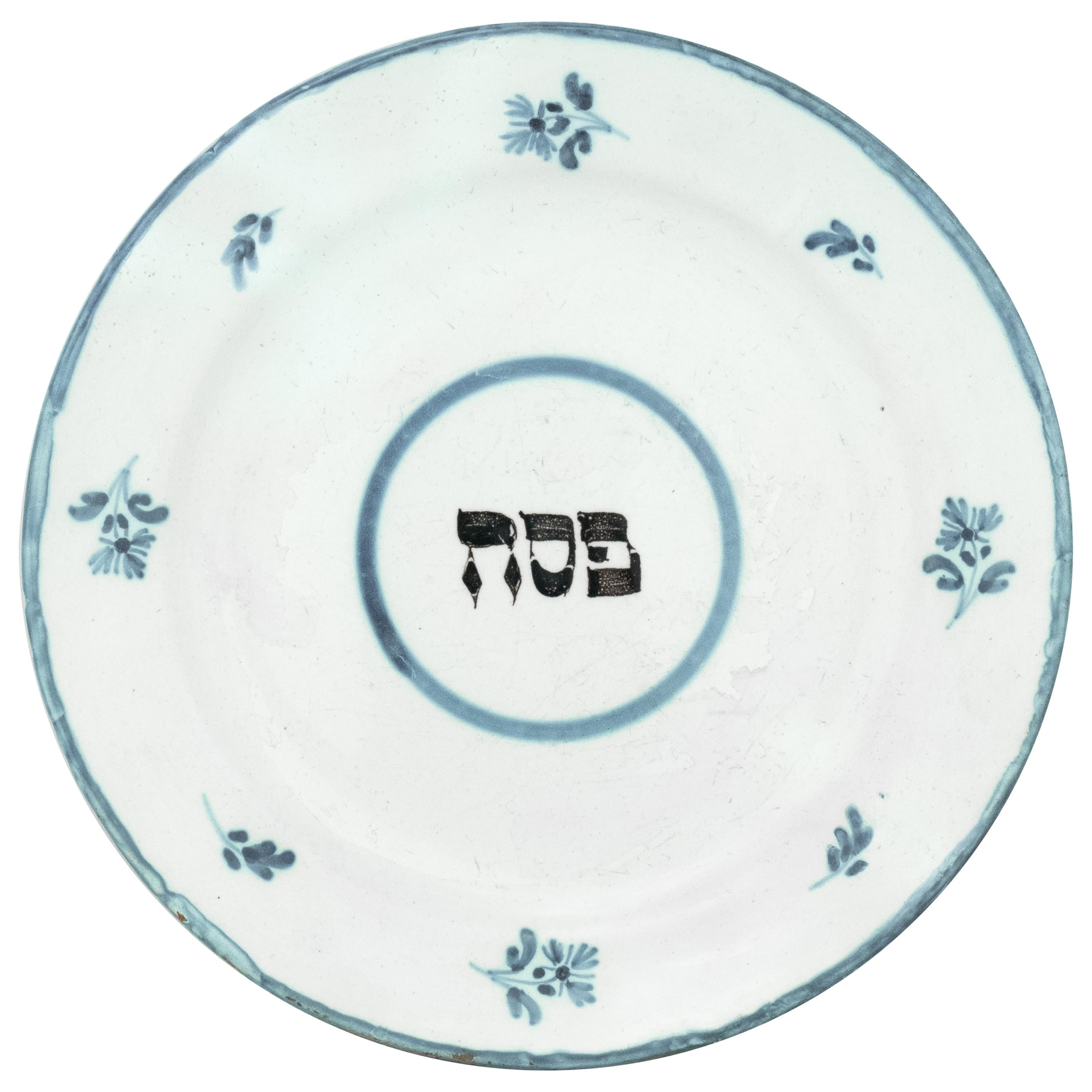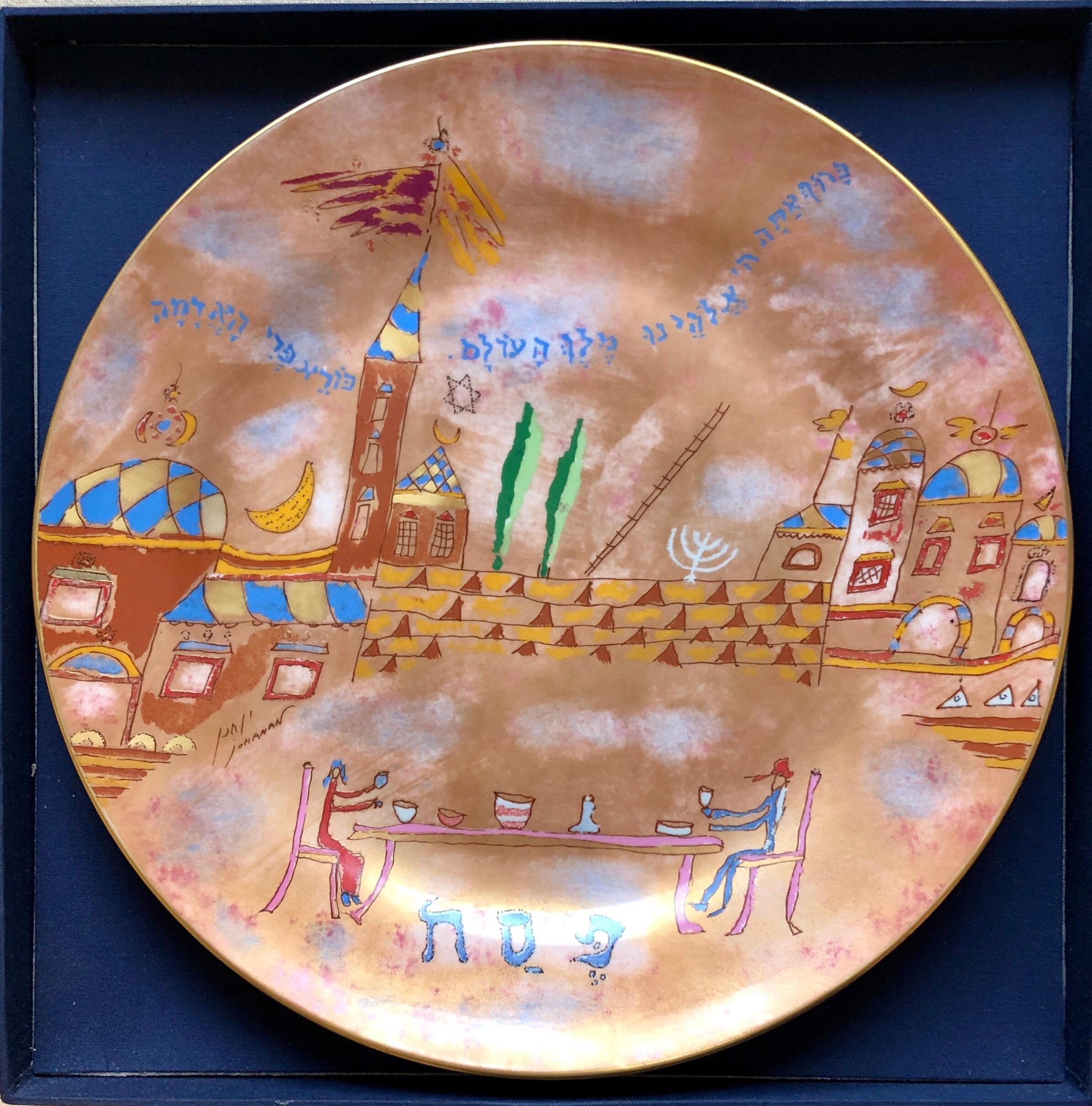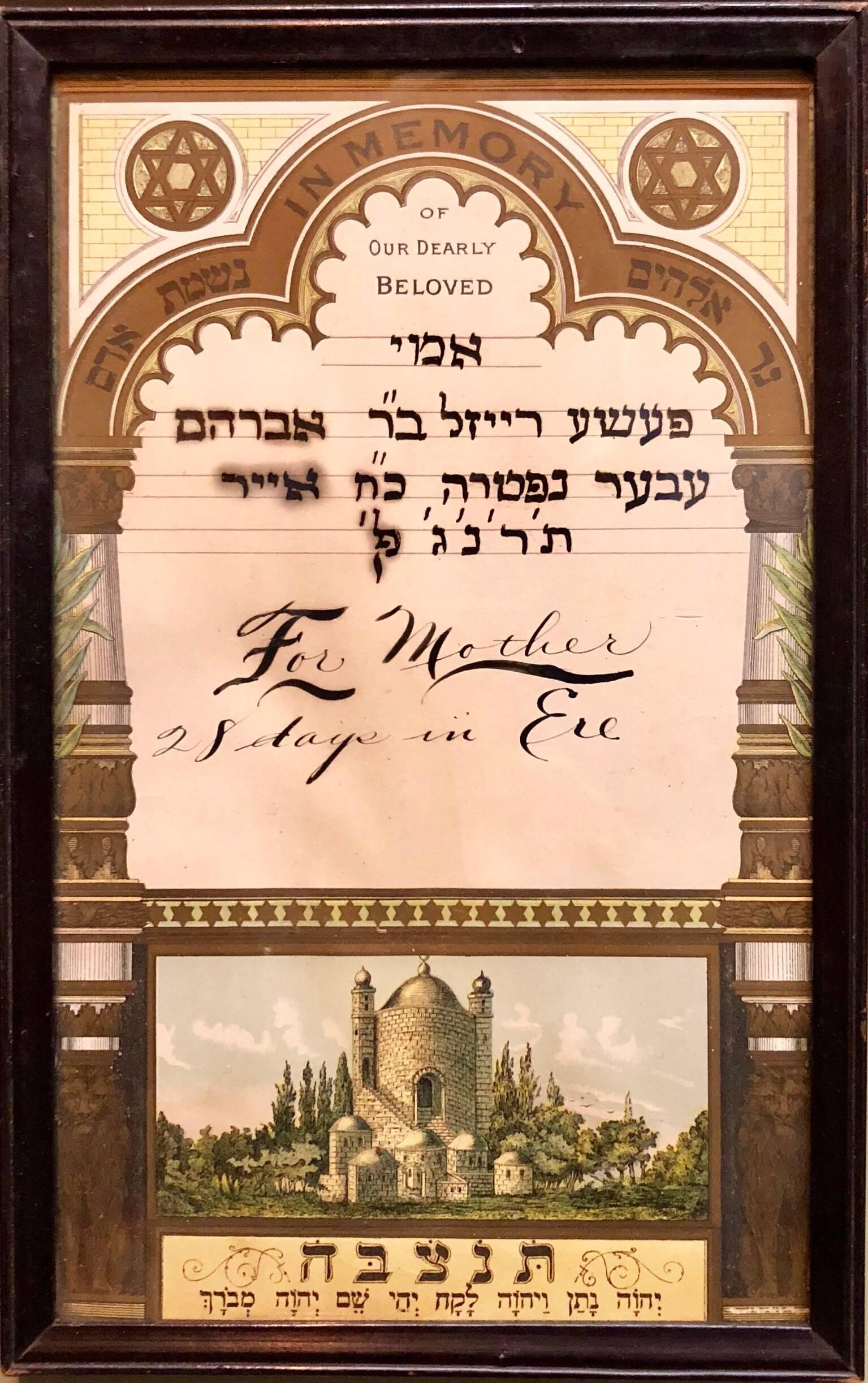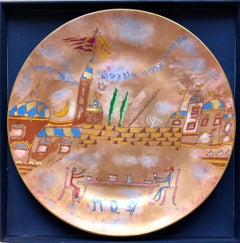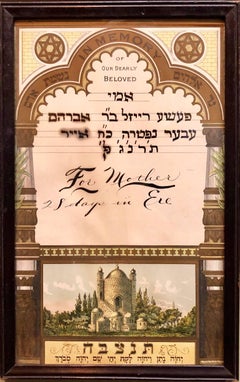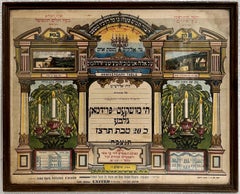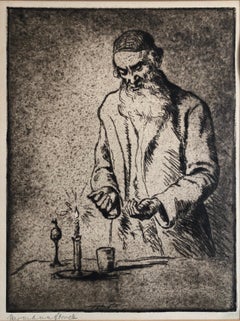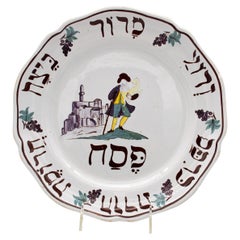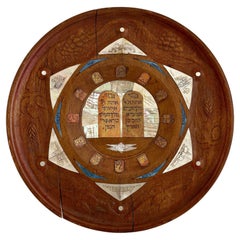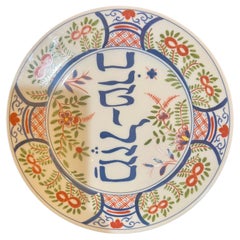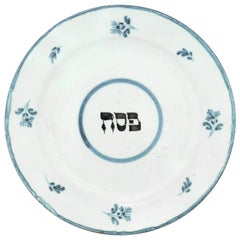Items Similar to Rare European 19C Judaica Havdalah Hebrew Plate
Want more images or videos?
Request additional images or videos from the seller
1 of 8
UnknownRare European 19C Judaica Havdalah Hebrew Plate
$1,200
£905.12
€1,044.19
CA$1,693.83
A$1,885.98
CHF 981.43
MX$22,763.40
NOK 12,307.99
SEK 11,625.67
DKK 7,795.66
About the Item
Here is a rare late 19th Century-early 20th Century painted and stenciled Jewish plate with a Yiddish greeting. A rare piece of Jewish Porcelain from the Pre War era. In a bold black and red color combination.
- Dimensions:Height: 1.5 in (3.81 cm)Diameter: 30 in (76.2 cm)
- Medium:
- Movement & Style:
- Period:
- Condition:minor scratches commensurate with use and wear.
- Gallery Location:Surfside, FL
- Reference Number:1stDibs: LU38210989032
About the Seller
4.9
Platinum Seller
Premium sellers with a 4.7+ rating and 24-hour response times
Established in 1995
1stDibs seller since 2014
1,797 sales on 1stDibs
Typical response time: <1 hour
- ShippingRetrieving quote...Shipping from: Surfside, FL
- Return Policy
Authenticity Guarantee
In the unlikely event there’s an issue with an item’s authenticity, contact us within 1 year for a full refund. DetailsMoney-Back Guarantee
If your item is not as described, is damaged in transit, or does not arrive, contact us within 7 days for a full refund. Details24-Hour Cancellation
You have a 24-hour grace period in which to reconsider your purchase, with no questions asked.Vetted Professional Sellers
Our world-class sellers must adhere to strict standards for service and quality, maintaining the integrity of our listings.Price-Match Guarantee
If you find that a seller listed the same item for a lower price elsewhere, we’ll match it.Trusted Global Delivery
Our best-in-class carrier network provides specialized shipping options worldwide, including custom delivery.More From This Seller
View AllPost Modern Italian Passover Seder Plate Richard Ginori Art Porcelain Judaica
Located in Surfside, FL
Johanan Vitta, painter, born 1941, Jerusalem. Lives in Italy.
Education Firenze, Florence, Italy
He designed the famous La Sinagoga di Firenze poster. The poster features a painterly synagogue it was done for the “Comunita Israelitica"
He has also designed Judaic ritual objects including a menorah that is in a famous museum collection. Arman, Elio Carmi, Eugenio Carmi, Lucio Del Pezzo, Guy De Rougemont, Maurizio Galimberti, David Gerstein, Claude Lalanne, Marino Marinelli, Mimmo Paladino, Arnaldo Pomodoro, Tobia Rava...
Category
1980s Post-Modern Abstract Sculptures
Materials
Porcelain
Rare Judaica 1893 Jewish Yizkor Memorial Plaque Hebrew English Chromolithograph
Located in Surfside, FL
A rare Judaic memorial piece for mother.
Category
Late 19th Century Aesthetic Movement More Prints
Materials
Lithograph
Rare Palestine Antique Hebrew Judaica Yahrzeit Synagogue Sign Memorial Plaque
Located in Surfside, FL
Circa 1890-1920. This Neoclassical, Judaic, Egyptian revival, Orientalist Mizrach sign, was produced in British Mandate Palestine by the chromolithograph process at the beginning of the 20th century. It pictures vignettes of holy places. with a hand written memorial. It was for the Tzedakah charity fund for the century-old institutions in Jerusalem: The great "Torah Center Etz Chaim"; a Free Kitchen for poor children and orphans; the famous Bikur Cholim Hospital with its dispensaries and clinics and the only Home for Incurable Invalids in Eretz Israel. They also worked with Arthur Szyk and Alfred Salzmann.. The A.L. Monsohn Lithographic Press (Monzon Press, Monson Press, דפוס אבן א"ל מאנזאהן, דפוס מונזון) was established in Jerusalem in 1892 by Abraham-Leib (or Avrom-Leyb) Monsohn II (Jerusalem, c.1871-1930) and his brother Moshe-Mordechai (Meyshe-Mordkhe). Sponsored by members of the Hamburger family, the brothers had been sent to Frankfurt, Germany in 1890 to study lithography. Upon returning to Jerusalem in 1892 with a hand press, they established the A.L. Monsohn Lithographic Press in the Old City of Jerusalem. According to the Information Center for Israeli Art A.L. Monsohn "created complex decorations for documents and oriental calendars that combined the tradition of Jewish art with modern printing techniques such as photographic lithography, raised printing and gilding."
The founders of the Monsohn press produced Jewish-themed color postcards, greeting cards, Jewish National Fund stamps, and maps documenting the evolution of the Jewish settlement in Eretz Israel in the nineteenth-twentieth centuries; religious material such as decorative plaques for synagogues, portraits of Old Yishuv rabbis such as Shmuel Salant, Mizrah posters indicating the direction of prayer for synagogues, memorial posters, and posters for Sukkot booths; color frontispieces for books such as Pentateuch volumes and the early song collections of Abraham Zvi Idelsohn (e.g., Shire Zion, Jerusalem 1908); artistic wedding invitations; and labels, packaging and advertisements for the pioneering entrepreneurs of Eretz Israel. The texts appearing in the Monsohn products were in several languages: Hebrew, Arabic, Yiddish, English, German (e.g., a c1920 trilingual Hebrew-English-Arabic "Malaria Danger" broadside warning the public of mosquitoes spreading malaria). Many of the brilliantly colored postcards and maps can be seen online as can the artistic invitations to his children's weddings which Monsohn published in the Jerusalem Hebrew press.
For years, the Monsohn (later, Monson/Monzon) Press was considered the best and most innovative in the country—pioneering in such techniques as gold-embossing and offset printing, among others. Early items for tourists included collections of Flowers of the Holy Land (c. 1910–1918)—pressed local flowers accompanied by scenes from the Eretz Israel countryside and relevant verses from the Bible, edited by Jsac Chagise (or Itzhak Haggis), an immigrant from Vitebsk, and bound in carved olive wood boards. Shortly after World War I Monsohn (now spelled מונזון) used zincography to produce the prints included in the Hebrew Gannenu educational booklets for young children illustrated by Ze'ev Raban of the Bezalel Academy of Art and Design and printed in Jerusalem by Hayim Refael Hakohen (vol. 1, 1919; vols. 2–3, 1920). In 1934 Monsohn moved into the new, western part of Jerusalem, in a shop with four presses and 30 workers, including Abraham-Leib's sons, David, Yosef, Moshe and Shimon, and his daughter Raytse's husband, Abraham Barmacz. The concern did business with all sectors of the city's population, including Arabs, for whom they printed in Arabic. Among their clients were members of the Ginio, Havilio, and Elite families, and Shemen, Dubek, and other renowned national brands, manufacturing products such as wine, candies, oil, and cigarettes. They also printed movie and travel posters, and government posters, postcards and documents, hotel luggage labels...
Category
Early 20th Century Aesthetic Movement More Art
Materials
Lithograph
German Israeli Judaica Havdalah Scene Jewish Shabbat Closing Ceremony
By Hermann Struck
Located in Surfside, FL
Genre: Judaica
Subject: People
Medium: Print
Surface: Paper
size: 13.5 X 10.5, 17.5 X 13.75 with mat.
on the Haifa Museum website this piece is described as a vernis-mou, aquatint et...
Category
Early 20th Century Modern Figurative Prints
Materials
Etching
Vintage Russian Shtetl Scene, Judaica Lithograph
By Anatoli Lvovich Kaplan
Located in Surfside, FL
Pencil signed and dated, colored Judaica Lithograph.
Anatoli Lwowitch Kaplan was a Russian painter, sculptor and printmaker, whose works often reflect his Jewish origins.
his father was a butcher in Rahachow which was at that time within the Jewish Pale of Settlement in Russia. His background was therefore not dissimilar to that of Marc Chagall, born a generation earlier in 1887, and although their lives were very different, their art has much in common. The shtetl figures in many of Kaplan's paintings - autobiographical references are very clear in The Butcher's Shop (1972) and Tailor's Shops (1975) and in the many illustrations which he was to create to the works of Sholem Aleichem...
Category
Mid-20th Century Modern More Prints
Materials
Lithograph
The Treasured Land, Judaica Folk Art
By Michoel Muchnik
Located in Surfside, FL
Michoel Muchnik was born in Philadelphia in 1952. Muchnik received his artistic training at the Rhode Island School of Design. He later studied Jewish and Talmudic studies at the Rabbinical College of America in Morristown, New Jersey.
Michoel Muchnik's art focuses on imaginative and joyful depictions of traditional and mystical Jewish and Hasidic themes. Muchnik has exhibited his work and lectured on Hasidic art throughout the United States as well as abroad. In 1977, Muchnik was selected alongside four other Hasidic artists, including Hendel Lieberman...
Category
Late 20th Century Folk Art Figurative Prints
Materials
Lithograph
You May Also Like
French faience Passover plate, JUDAICA 19th century
Located in Tel Aviv - Jaffa, IL
this plate has a creme white background, the center painted with a man holding a lamb before a cityscape, probably a depiction of Jerusalem by someone who never actually visited the city or even see it, under the man there is the word Passover "פסח" the rim with the order of the Seder, and some grape vines between them.
Passover, also called Pesach ( Biblical Hebrew: חַג הַפֶּסַח, romanized: Ḥag haPesaḥ), is a major Jewish holiday, one of the three pilgrimage festivals, that celebrates the Biblical story of the Israelites' escape from slavery in Egypt.
Pesach starts on the 15th day of the Hebrew month of Nisan which is considered the first month of the Hebrew year. The Hebrew calendar...
Category
Antique Late 19th Century French Victorian Platters and Serveware
Materials
Pottery
Early 20th Century Bezalel Jerusalem Shabbat Tray
Located in New York, NY
Early 20th century Bezalel Jerusalem wooden tray inlaid with Jerusalem stone and mother of pearl.
The large tray is carved with the Seven Species on its...
Category
Early 20th Century Israeli Folk Art Religious Items
Materials
Marble
$15,000 Sale Price
20% Off
Mazel Tov decorative Collector Plate Metropolitan Museum of Art Jewish Museum
By Metropolitan
Located in San Diego, CA
Beautiful decorative Mazel Tov plate reproduction , of 18th century delft Metropolitan MMA TJM ,vintage excellent condition Hebrew Yiddish.
Category
20th Century Japanese International Style Decorative Dishes and Vide-Poche
Materials
Porcelain
Early 18th Century Dutch Tin-Glazed Earthenware Passover Plate
Located in New York, NY
18th century tin-glazed earthenware Passover plate, Delft, the Netherlands.
Decorated with a foliate design in light blue, the Hebrew word "Pesach" (Pas...
Category
Antique Early 18th Century Dutch Religious Items
Materials
Earthenware
$1,910 Sale Price
20% Off
Decorative Judaica Passover plate by Heinrich Schwed. Munich, 1924.
Located in Tel Aviv - Jaffa, IL
Decorative Passover plate by Heinrich Schwed. Munich, 1924.
ALPACA, etched.
This Large plate, featuring a round medallion in the center, with a Matzah which in this plate is hand c...
Category
Vintage 1920s Platters and Serveware
Materials
Alpaca
Early 20th Century Czech Porcelain Passover Seder Plate
Located in New York, NY
Unusual oval shape Seder plate, Karlsbad, Czechoslovakia, circa 1900.
Divided into seven wells and inscribed with gold lettering and border with the order of the Seder.
Signed on t...
Category
Early 20th Century Czech Porcelain
Materials
Porcelain
$660 Sale Price
38% Off
